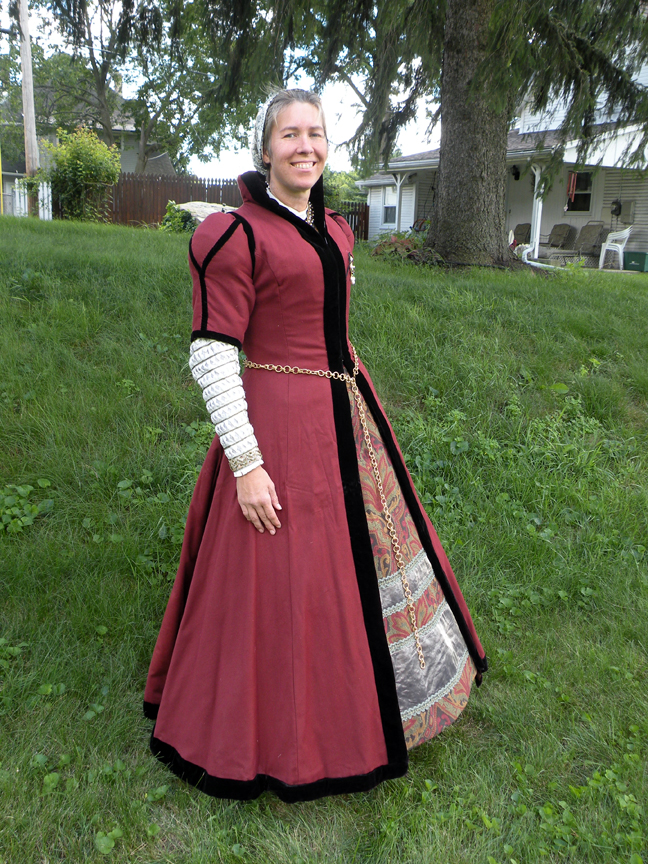 The gown is russet wool lined with brown linen. It hooks up the front with hooks and eyes.
The gown is russet wool lined with brown linen. It hooks up the front with hooks and eyes.
This gown represents what a well-to-do gentlewoman would have worn in London c. 1570. The outer gown is designed based upon portraits and pictures of women in the 1560s and 70s, particularly Lucas de Heere's sketch of English Gentlewomen c. 1570. The kirtle is constructed and decorated very much like the loose kirtle in Arnold's Patterns of fashion, the only change being the side and back seams were taken in to make it fit closely around the torso.
 The gown is russet wool lined with brown linen. It hooks up the front with hooks and eyes.
The gown is russet wool lined with brown linen. It hooks up the front with hooks and eyes.
 the gown has a side front seam which, now that I know better, I wouldn't have used if I was making the gown now.The sleeves are boned with artificial whalebone.
the gown has a side front seam which, now that I know better, I wouldn't have used if I was making the gown now.The sleeves are boned with artificial whalebone.
 Showing the lining and kirtle beneath. THe gown is faced as well as guarded with black velvet. I'm wearing a small farthingale beneath.
Showing the lining and kirtle beneath. THe gown is faced as well as guarded with black velvet. I'm wearing a small farthingale beneath.
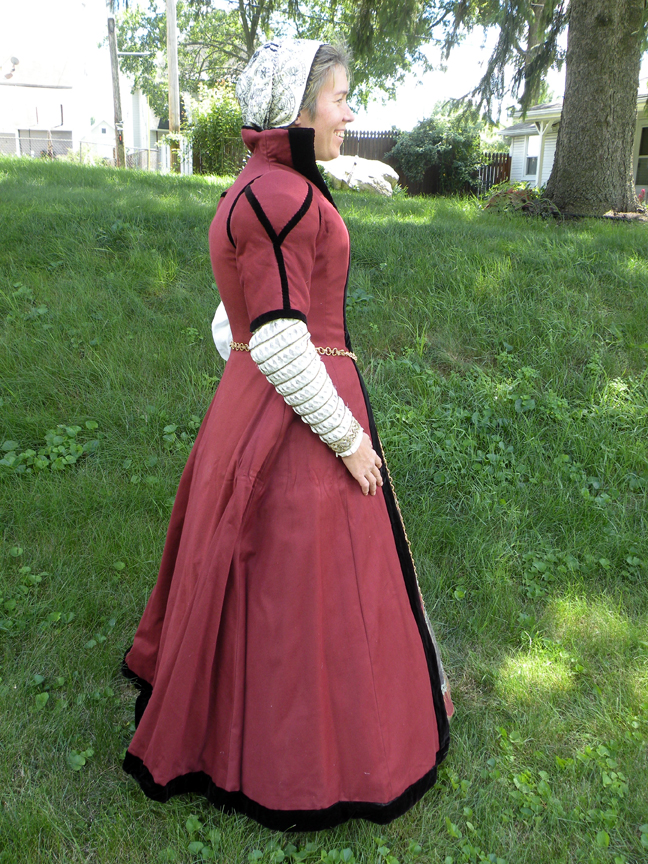 Side view of the gown. The sleeve base is a close-fitting sleeve of canvas, to which a network of poly-boning was sewn. This was covered with a layer of batting, and this covered with the outer fabric. I tried using shaped buckram, but found that it wouldn't keep its shape when wet. Stuffing the sleeves created a lumpy shape that wasn't smooth and clean.
Side view of the gown. The sleeve base is a close-fitting sleeve of canvas, to which a network of poly-boning was sewn. This was covered with a layer of batting, and this covered with the outer fabric. I tried using shaped buckram, but found that it wouldn't keep its shape when wet. Stuffing the sleeves created a lumpy shape that wasn't smooth and clean.
 Side back view
Side back view
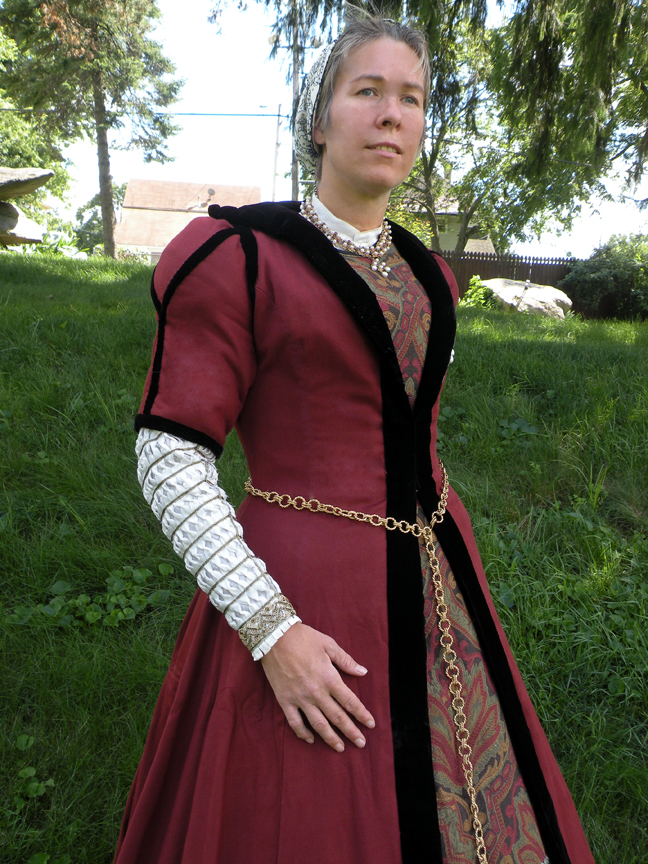 Gown with the collar laid flat
Gown with the collar laid flat
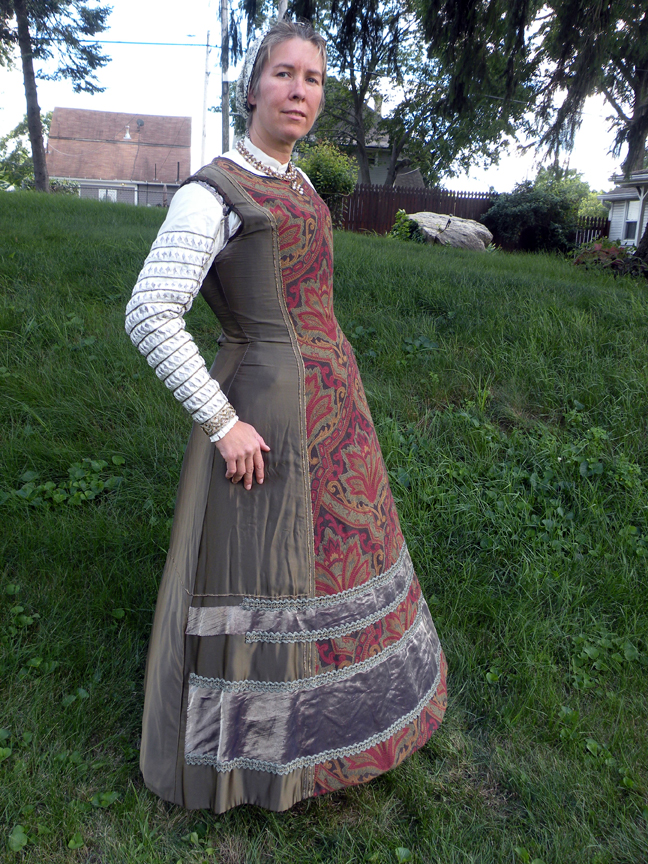 The Satin kirtle was made of charmeuse backed with canvas. If I was to do it again I'd go with true heavyweight silk satin; it prevents the wrinkles seen here at the side. The front section is brocade, and the guards are a layer of brown taffeta covered with a layer of metallic silk gold-and-purple gauze.
The Satin kirtle was made of charmeuse backed with canvas. If I was to do it again I'd go with true heavyweight silk satin; it prevents the wrinkles seen here at the side. The front section is brocade, and the guards are a layer of brown taffeta covered with a layer of metallic silk gold-and-purple gauze.
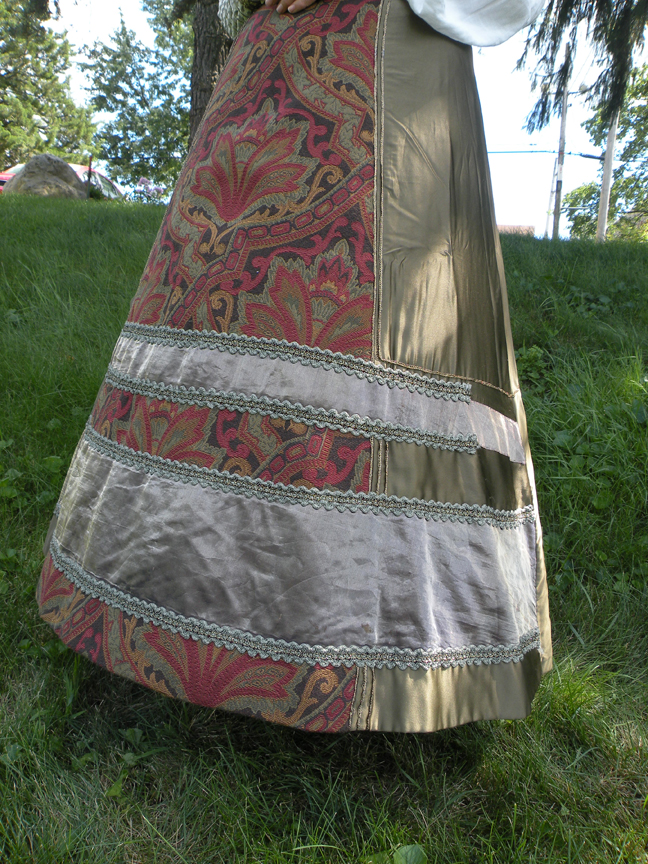 The placement and type of trim and guards was copied from that of the kirtle in Arnold's Patterns of Fashion.
The placement and type of trim and guards was copied from that of the kirtle in Arnold's Patterns of Fashion.

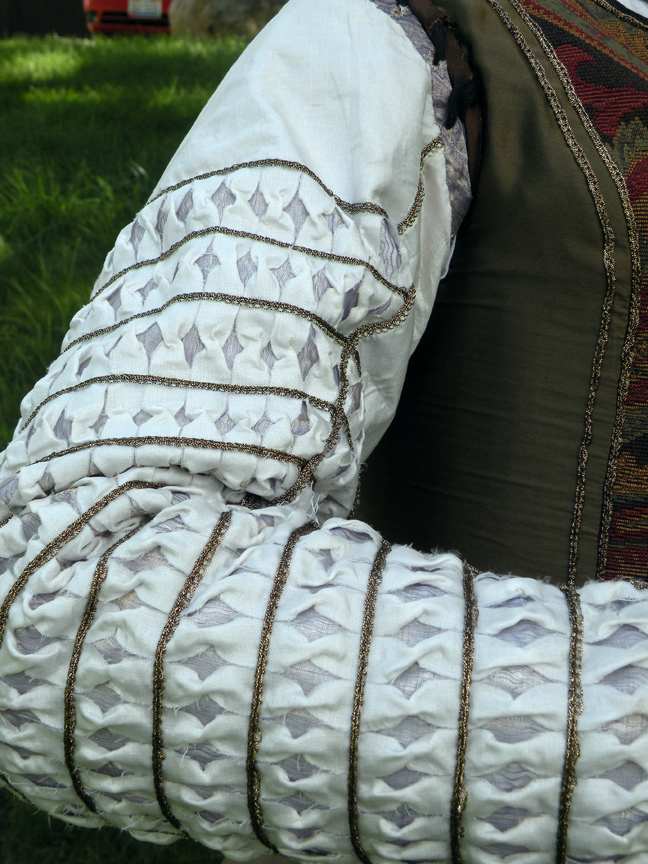 The sleeves of the kirtle were patterned after several pairs in Arnold's Patterns of Fashion and her article on Pinking and Slashing.
The sleeves of the kirtle were patterned after several pairs in Arnold's Patterns of Fashion and her article on Pinking and Slashing.
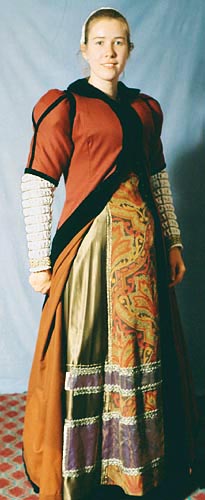 The gown works equally well without a farthingale. The stiff layer of additional lining around the bottom third of the inside of the kirtle, combined with the layer of velvet guarding around the bottom edge, gave a lot of body to the bottom of the skirts.
The gown works equally well without a farthingale. The stiff layer of additional lining around the bottom third of the inside of the kirtle, combined with the layer of velvet guarding around the bottom edge, gave a lot of body to the bottom of the skirts.
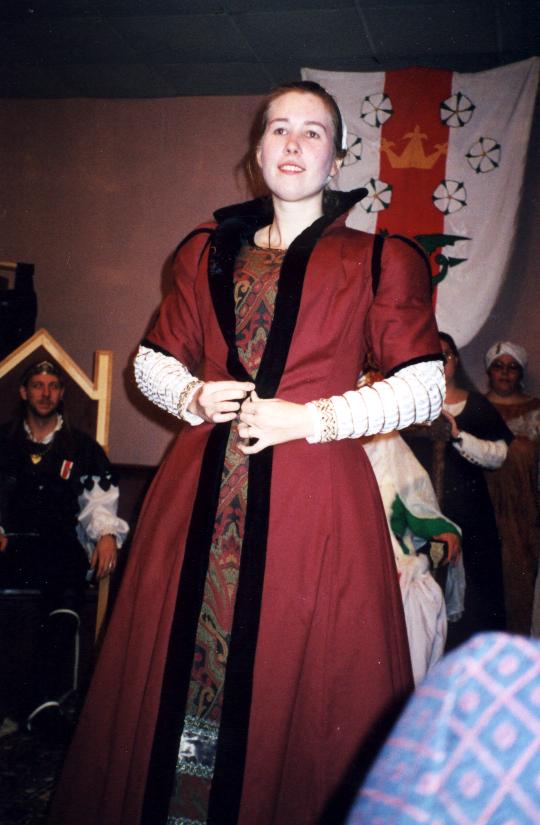 Another pic of the gown without a farthingale. It was more likely to be worn without a farthingale by women of the merchant classes than with.
Another pic of the gown without a farthingale. It was more likely to be worn without a farthingale by women of the merchant classes than with.